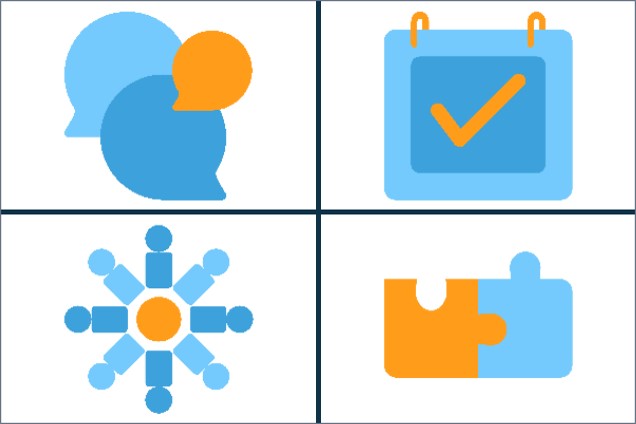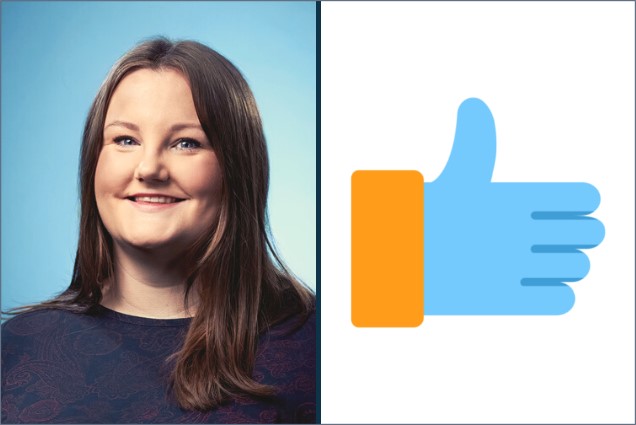In the “Job Profiles” series, various members of the InterNations team talk about their role in the company. In this interview, Social Media Manager Samantha discusses what being the official “voice of InterNations” on nearly half a dozen different platforms is like.
[Read more…] about What Does a Social Media Manager Do All Day?content and communications
Using Original Research to Boost Business Goals
Conducting original research is a considerable expense, but it can be key to strengthening your company’s PR and marketing outreach. InterNations is sharing some of the insights that our team has gained from conducting a large-scale survey for nine years.
[Read more…] about Using Original Research to Boost Business GoalsRemote First: Communication and Collaboration

This post is the latest installment in our new “Remote First” series. We’ll be exploring what becoming a fully remote company means for the InterNations Team and how this policy will be implemented across different workstreams — from HR to IT support.
In the second half of 2020, working remotely had turned into our “new normal” due to the ongoing COVID-19 pandemic. When it became increasingly obvious that certain restrictions on where and how we were able to work would apply for longer than expected, our management board also started discussing what working at InterNations should be like in post-pandemic times.
It was then that the idea for our new remote-first policy — as announced during the InterNations Kick-Off 2021 — was born. In the future, the team members of InterNations and InterNationsGO! will be able to work from anywhere in Germany or Portugal, respectively, at any time. Even working permanently from another country may be possible on a case-by-case basis. Once this game-changing decision had been made, the first step was to define all workstreams that it would affect. Several project teams have been busy working out what exactly will change with regard to legal and financial issues, HR, our internal IT infrastructure, our office setup, our corporate culture, and — last but not least — communication and documentation.
Actually, we began to change the way we communicate and collaborate on the very first day of remote work. “We started planning a new concept for internal communication the moment we all went remote back in 2020, but we’ve had to rethink our way of organizing it since then,” says Caroline, our Team Lead Corporate Communications. In short: It was time to systematically evaluate our approach, not only to internal communication, but also to meetings and documentation, and see whether it would hold up in a remote-first setting.
“We didn’t want to reinvent the wheel, though,” adds Franziska, our Team Lead Product Content. The aim was rather to come up with best-practice advice on what is most relevant for our organization, drawing inspiration from Silicon Valley tech companies, such as GitLab, who have embraced remote work for quite some time now. Building upon the technical infrastructure we already have, the tools we have all been using, and the team culture we’ve established, the project team wants to ensure equal participation for everyone, regardless of their location.

No Such Thing as Too Much Communication
The abrupt switch to remote work in March 2020 highlighted the importance of internal communication for a large team such as ours. Though it might often be deprioritized in favor of communicating with an external audience — for instance, reaching out to media contacts or replying to social media comments — internal communication is now more vital than ever, and not only to keep all team members informed of the ever-changing COVID-19 regulations!
A situation where all or part of the team work remotely makes it more difficult to keep everyone up to date and engaged, simply due to the lack of casual interactions at the office. Therefore, internal communication needs to be as timely as possible and create maximum transparency. “Basically, there’s no such thing as too much communication,” Head of Content & Communications Kathrin emphasizes. “The physical distance created by the situation should not lead to an emotional distance or to people feeling left out of the loop. That is one of the challenges internal communication faces in a remote setting.”
To adjust our internal communication strategy, we relied on the tools we had already and intensified our scheduled communication on the instant messaging service Slack. It has also become a little more personal in nature, focusing on posts that will spark engagement and discussions among our team members. Off-topic and off-beat questions can help recreate those casual conversations that would normally happen in the hallway or the office kitchen. Be it favorite meals or childhood cartoon heroes — such non-work-related chats get a bit of social interaction going. (For example, I was quite relieved to find out that I wasn’t the only one majorly obsessed with Sailor Moon as a kid!)
As the novelty of working remotely has worn off and we all settled into our routines, we are planning to return to a stronger focus on the InterNations community in the near future. For the past year, posts promoting our events in Munich and Porto among our team have been rare as there have also been fewer events during the various phases of lockdown. But one of our goals in internal communication is still to bring the members of our community closer to our team members who may not interact with them on a regular basis.
Internal communication can be used as a tool to help us understand who our members are, how we can support them best, and what kind of impact our work has. “We are currently brainstorming ideas for sharing personal quotes and stories from InterNations members,” Caroline explains. “For example, we might use Slack to showcase some stories from a member survey on how COVID-19 has affected their expat life.”

A Meeting Culture to Ensure Equality Regardless of Location
While internal communication is probably the most visible part of the whole communication and collaboration workstream, the rest of the cross-departmental project team — Kathrin, Franziska, and our CTO Lars — has been hard at work behind the scenes.
“Like in the other workstreams, the starting point and the goal of a remote-first meeting and working culture is to ensure equal participation independent of location. Nobody should feel left out or disadvantaged because of where they work,” Kathrin explains. “Being able to come to the office in person shouldn’t give you any advantages in terms of infrastructure, participation, or access to information.”
Even when we no longer have to stick to COVID-19 health-and-safety rules at the office, every meeting will still take place online by default. There should never be a situation where part of the team is in the same room together while just a few team members are joining remotely. This setup automatically creates a hierarchy where the people sharing the same physical space have an advantage, whereas the remote participants aren’t on an equal footing. For them, it’s always more difficult to really get involved in the conversation. So, everyone will be joining all future meetings with a headset from their own laptop, even if they are at one of the InterNations offices.
This one decision has various implications for our meeting culture, for instance, concerning the technical setup and functionalities required for a virtual meeting. “Most of our guidelines are dictated by common sense, but it’s still worth spelling them out,” Kathrin stresses. Best-practice recommendations vary depending on the type and size of the meeting, but some rules always make sense: keep background noise and visual distractions to a minimum, mute yourself while not talking, use the software’s reaction features instead of interrupting the speaker, to name but a few.
In addition to this, the presenter needs to keep in mind that Zoom fatigue is real and videoconferencing can actually be more exhausting than attending an in-person meeting. They should always include some interactive elements to keep the participants from mentally checking out in long meetings with a large audience. Fortunately, remote meetings do have certain advantages too. They often tend to be more focused and effective exactly because the participants may find long video calls tiring. And they also enable collaborative notetaking during the meeting to keep the relevant documentation as detailed and up to date as possible.
Once introduced, the new meeting culture guidelines should become second nature to our team: all future colleagues will also hear about them during our remote onboarding process. The guidelines might even impact the design of the new and improved InterNations office in Munich. Huge meeting rooms might become obsolete, for example, while smaller spaces reserved for video calls could accommodate our virtual conferences.

An Increasing Need for Documenting
While collaborative documentation during remote meetings can be a huge benefit, a remote-first policy also increases the general need for documentation. “The purpose of the documentation project is actually twofold,” Franziska explains. “First of all, there should be a certain shift in everyone’s mindset.” All team members should be aware of how important documenting their work is and be able to quickly find the information they need. “Such a change takes time, though. People need to get used to it, and they also need role models who foster this spirit among the team.”
Franziska and her Product Content Team are setting an example: they have been busy expanding our company wiki with an overview of all the tools widely used for remote communication and collaboration across the entire organization. GitLab — one of the role models for this project — has published their entire documentation on their internal tools and processes for an all-remote team. This has, in turn, inspired Franziska’s team to document the way we work with specific tools. “For example, if our new meeting guidelines specify that team members should make sure their Outlook calendar shows their standard working hours, we’d better provide them with a quick how-to,” she says.
The documentation focuses on best-practice tips to make our day-to-day work as easy and frictionless as possible, reacting to actual questions asked by colleagues and pointing out options that might be especially helpful for some team members. “One of our colleagues is using a screen reader, for example. So, you can’t just share your desktop as a video. Instead, you need to share the actual PowerPoint presentation in MS Teams to enable the reader to ‘view’ your slides, and our documentation tells you how this works,” Franziska explains.
On top of the various wiki pages, organizing personal trainings for specific tools is the next step. Of course, like internal communication, proper documentation is never finished. “That’s the other thing about documentation,” she adds. “Tools get updated, workflows keep changing, and the work is never done.” It is an ongoing process — as is changing our company to a remote-first organization with a remote-first mindset and an adapted team culture that’s stronger than ever.
Job Profile: What Does a Copywriter Do All Day?
In the series “Job Profiles”, we talk to various members of the InterNations team about their position and the work that they do.
For the latest instalment, we’ve interviewed Crissy, a US American expat who works in our Content & Communications Department.

Gaining Work Experience as an Intern in the Social Media Team
When her internship was coming to an end, we asked our Social Media Intern Darcie to sum up her experiences at the InterNations office in Munich.
[Read more…] about Gaining Work Experience as an Intern in the Social Media Team
